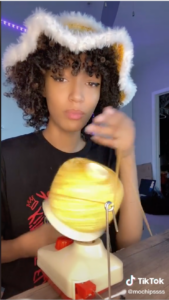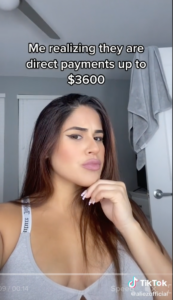Mikka Kei Macdonald is the Creative Director of Community Change Action, a national organization empowering grassroots social movements. Ashwath Narayanan is the Founder and CEO of Social Currant, a platform working to match non-profits and purpose-driven organizations with creators to work together on a social media campaign. They shared the following playbook with Harvard T.H. Chan School’s Center for Health Communication in Spring 2023 as part of its ongoing workshop series “Health Communication in a Changing World.”

Introduction: How TikTok can supercharge your messaging campaign
Many well-meaning outreach initiatives in public health and beyond have an issue: traditional campaign structures have become tired and predictable, with a lack of diversity in centralized leadership resulting in a lack of diversity in strategy. This can often mean that certain communities are ignored and aren’t reached where they are. Emerging platforms like TikTok offer opportunities for reinvention. The user base on TikTok is younger and more diverse than traditional media platforms, meaning that we can leverage it to reach individuals that more traditional methods cannot. Creators on the platform not only have large, preexisting followings (often rivaling the size of a small media empire), but they are also experts in producing engaging and attention-grabbing videos: at once, they are content stars, writers, editors, and distributors. Creators often command massive trust and respect from their audience who look to them for guidance from their experiences. Working closely with creators can take any messaging campaign on TikTok to the next level.
Step 1: Identify and reach out to creators
Look for the right creator-partners for your campaign by word of mouth, the TikTok Creator Marketplace, or other creator-matching platforms (including Social Currant, founded by Ashwath). Creators with followings between 200 thousand and 1 million, who have high rates of engagement (15%+) on their posts, are a good place to start. Tailor your search based on the demographics of the audience you hope to reach, but you don’t need to limit yourself to people who already have an interest in your issue. For example, Spanish-speaking creators will help you reach a Spanish-speaking audience more effectively—but recruiting, say, non-political creators to talk about the power of voting might introduce your topic to a new audience. Finally, make sure to vet creators on a case-by-case basis before getting in touch. Vet them by watching their content, looking through the comments, and making sure you have an overall understanding of who they are.
Step 2: Create a messaging brief and share it with your creators
Describe your campaign briefly and concisely—make sure the creator understands the purpose and wider strategy behind it. Supply the creator with any information they need to make sure the message they’re sharing is accurate. Provide the creator with examples of trends and concepts that they could play off of when they make their own content. And, wherever possible, find ways to give creators more decision-making power in the wider program. Sometimes, you can even add specific messaging for specific creators if you want to give them some additional guidance on how your content is relevant to theirs.
Step 3: Offer feedback, edit footage, and post!
Ask the creator to share videos with you before posting so that you can provide feedback (i.e. fact checking) if necessary. Make sure to avoid the tendency to micromanage and be comfortable knowing that you might not find the content relatable (it might not be targeting your demographic, and that’s ok). Instead, let the creators do what they do best: Making content that informs, entertains, and inspires their community.
Step 4: Evaluate the content’s effectiveness
Once the video is live, evaluate its effectiveness at reaching an audience by working with the creator to monitor engagement rate, views, likes, comments, etc. If you’ve asked the creator to direct users to a website, set up URL tracking to record how many users are following the link. You can also employ third-party testing platforms to test how successfully persuasive your content has been.
How we put these steps into practice: A case study on the Child Tax Credit
We have put these steps to use in multiple campaigns, notably in one that recruited “non-political” creators to produce and distribute content around the expanded Child Tax Credit. Our goal was to work with fifteen creators to reach 100,000 views: we quickly blew past our benchmarks, ultimately yielding over 400,000 views in 48 hours — with over 42,000 engagements and over 1,000 clicks to Child Tax Credit resources.


Instead of just appearing on morning shows or in op-eds behind paywalls, conversations about the Child Tax Credit were being sprinkled into makeup tutorials, skits, and raps. In one video, creator @qhank pretends to be his nephew, ecstatic about the tax credit. In another, Georgia-based crochet designer and model @mochipssss breaks down the Child Tax Credit while rolling yarn.
After the campaigns, we used the third-party testing tool Grow Progress to target influencers’ estimated audience demographic, yielding the highest persuasion levels in the demographics we were trying to reach. Most notably, we saw the percentage of viewers who said that they had a very favorable view of the Child Tax Credit rise by 23 percentage points among Black viewers and by 13 percentage points among viewers making less than $49,000 annually.
After the campaign’s intervention, we also witnessed creators making content about issues like the Child Tax Credit, for the first time, without us. This suggests that these campaigns can be more than just self-contained communication tools—they can be base building ones, too.
Remember: the future of persuasion is distributed
Traditional campaigns—in public health, politics, or beyond—often rely on a small number of industry veterans making content that could appeal to the highest number of people at once (think: television, or even digital display ads). While these tactics work for some, their saliency is often limited to people who already resemble the decision-makers in power, and their effect is not keeping pace with the diversity of our audiences.
Additionally, these blanket techniques do not adapt as well to new platforms, where decentralized distribution allows (diverse) individual creators to tailor content to increasingly niche audiences. We don’t know how long TikTok will be around, but we do know that these types of emerging platforms will be here, and we need to build distributed campaigns that can adapt to them. We also know that trusted messengers will be around, no matter what platform and need to adapt a strategy that shifts the power to them.
No single tactic is a silver bullet, but as our media consumption decentralizes, our campaigns must evolve, too. Strategists in more traditional seats of power (including ourselves) should not continue deciding what type of content is, say, relatable to women in Georgia who are eligible for the Child Tax Credit. Instead, we can cede central power and create new ways to give impacted people the power and resources to decide for themselves.




